Our Resources
Access a wealth of resources provided by Diversity in Aquatics, including guides, research, and tools to support water safety and inclusion.
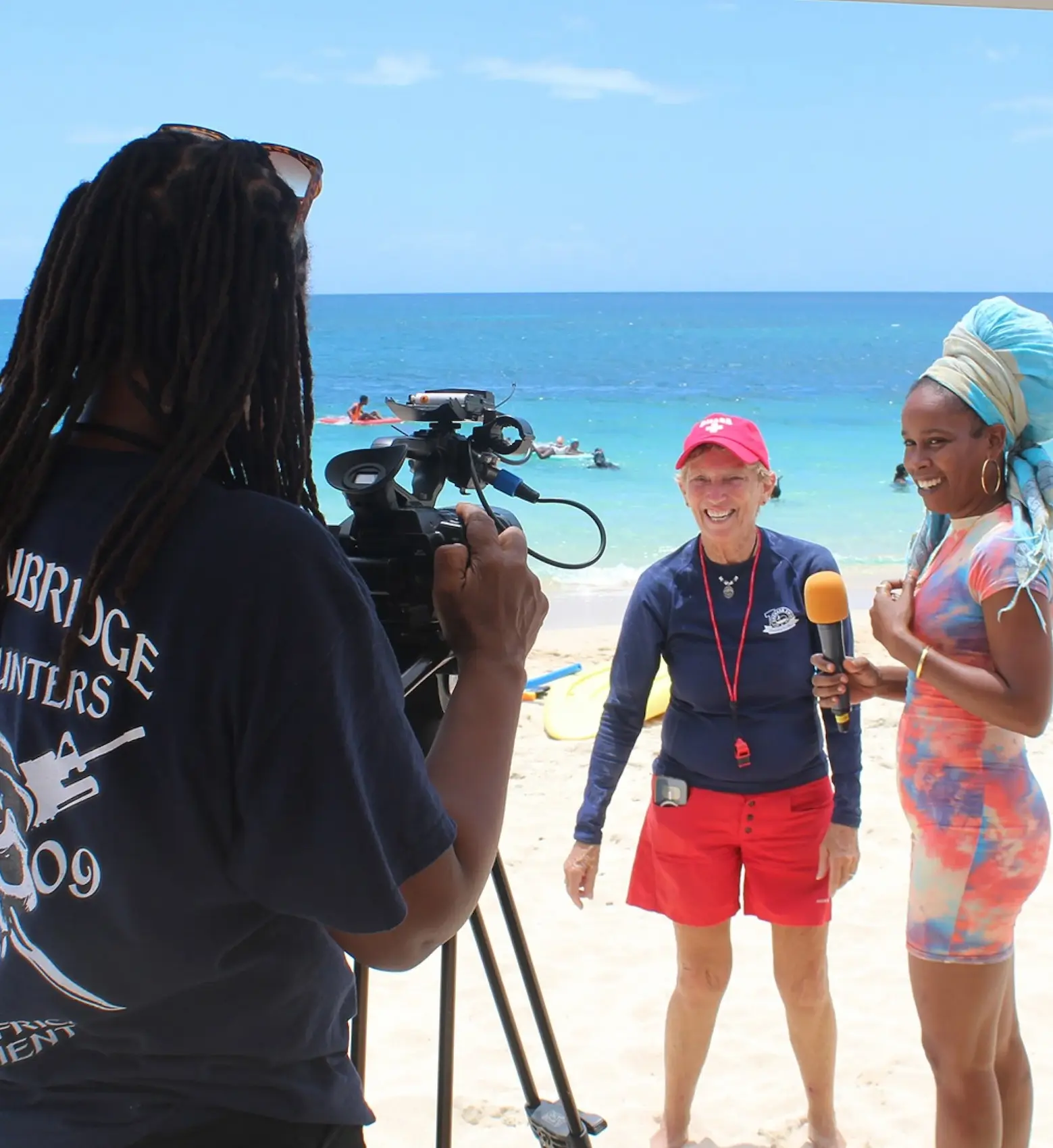
Our Resources
Diversity in Aquatics offers a range of resources aimed at promoting water safety, education, and broader participation
in aquatic activities, particularly among underrepresented communities.
Key resources include partnerships with organizations like the American Red Cross, the International Water Safety Foundation, and the ZAC Foundation, which offer training on water safety and drowning prevention. These collaborations aim to improve water competency by developing swimming skills, water safety awareness, and the ability to assist others in aquatic environments. The organization also provides educational programs, such as learn-to-swim initiatives for both youth and adults, with a focus on empowering marginalized communities.
How-Tos: Practical Guides and Tips
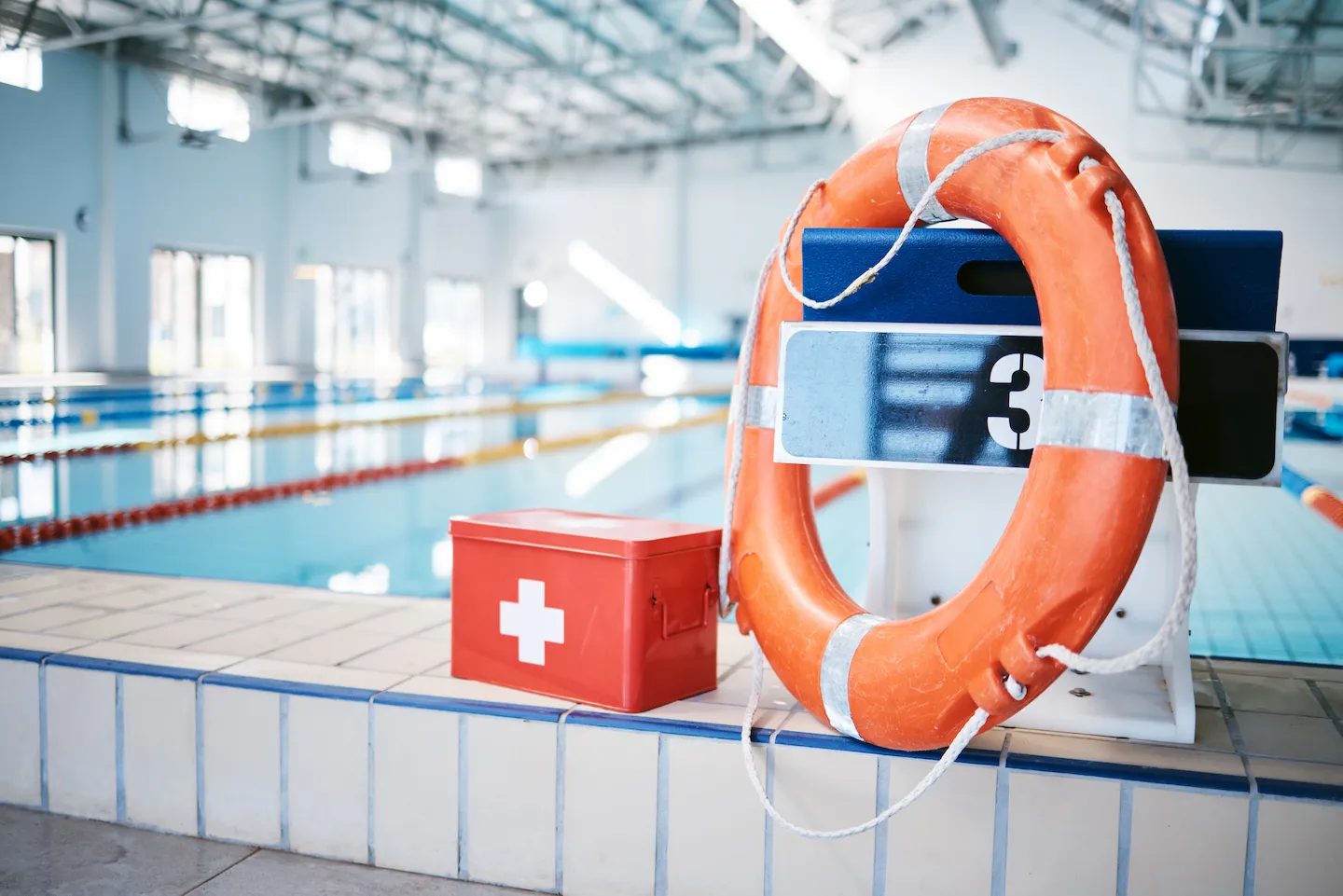
Water safety is a critical issue. It's a matter of life and death, yet it's often overlooked.
Access to water safety resources can make a significant difference. It can prevent accidents, save lives, and foster a love for aquatic activities. However, not everyone has equal access to these resources. Sociopolitical factors, cultural contexts, and historical disparities create barriers that prevent some from enjoying the benefits of aquatic opportunities.
This article offers a clear, inclusive guide on how to access and share water safety resources. Whether you're an aquatic sports director, education policy advisor, or a parent, this guide equips you to promote aquatic safety and advocate for fair access.
Let’s dive in and explore the resources together.
Water safety education is essential for all ages. It teaches life-saving skills, builds confidence, and fosters enjoyment of aquatic environments. While swimming can be fun, it carries inherent risks. Through proper education, we reduce these risks and support healthier, safer communities.
Water safety must reflect the needs of all communities. For effective engagement:
Examples of tailored resources:
These resources ensure that no one is left behind.
Leadership in aquatic settings must promote inclusion. Directors and coordinators should:
These efforts create welcoming environments that reflect the community’s diversity.
Access to swimming is a right, not a privilege. Advocacy strategies include:
Every action helps dismantle the systemic inequities in aquatic opportunities.
Collaboration is key. Work with:
Together, these partnerships can expand the reach and impact of water safety education.
Our Resource Page hosts a variety of materials, optimized for different platforms and audience needs. The categories include:
All resources are web-accessible and mobile-friendly, with clear icons and categories for intuitive browsing.
Follow these steps to use the Resource Page effectively:
Need help? A support icon is available on every page.
Maximize the impact of water safety materials by sharing them strategically:
These strategies make it easier for people to receive and use critical safety info.
Promoting water safety is about saving lives—and changing them. Your role, whether as a parent, educator, or community leader, matters deeply.
By using and sharing these resources, you help build a future where everyone—regardless of background—can enjoy the benefits of water safely. The ripple effect starts with you.
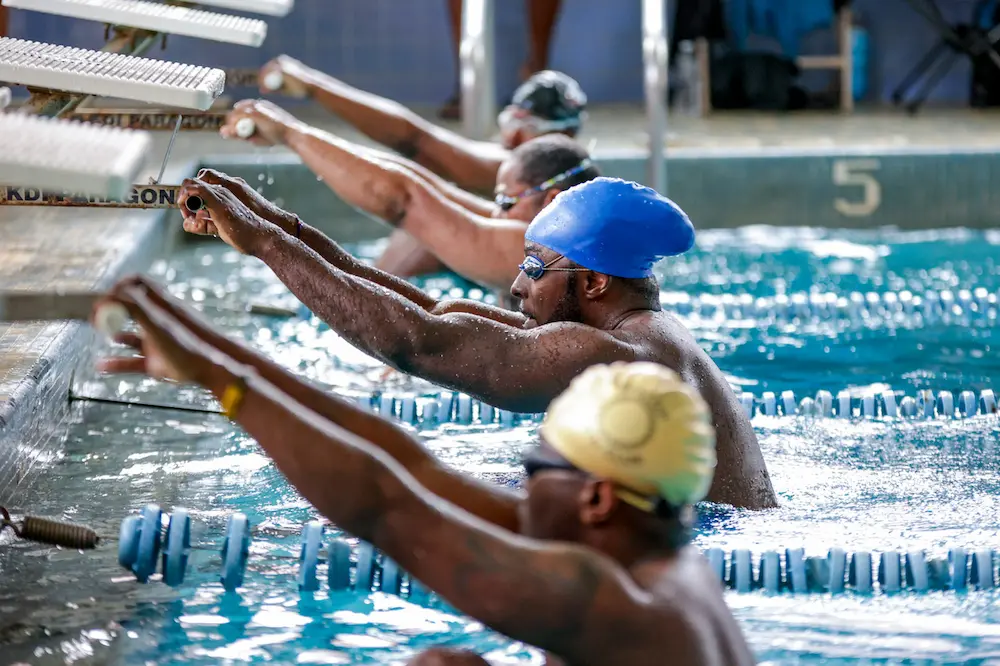
Competitive aquatic sports are more than just a way to stay fit—they’re a gateway to personal growth, mental strength, and community. Yet, access isn’t always equal. Historical, social, and economic barriers often stand in the way of underrepresented individuals. This guide is designed to break down those barriers and make aquatic sports accessible to everyone—regardless of background or experience.
Whether you're just learning to swim or aiming for elite competition, this is your roadmap to success in the world of aquatic athletics.
Aquatic sports are diverse and dynamic. They include:
Each sport emphasizes different skills and has its own competition structure, ranging from local club meets to international events like the Olympics. Starting young is common, but it’s never too late to dive in.
To compete successfully, athletes need physical conditioning, mental focus, and consistent practice. Key steps include:
Be patient—progress comes with consistent effort and support from family, mentors, and peers.
Once training is underway, the next step is entering competitions. Here’s how:
Expect structured schedules, official rules, and a supportive network of coaches and volunteers to guide the experience.
Here are authoritative resources to explore competitive aquatic sports further:
Each site includes training resources, event calendars, and tools for athletes and families.
We envision a future where competitive aquatic sports are accessible, equitable, and empowering. By addressing historical injustices and creating inclusive programs, we open the door for every athlete to thrive.
Whether you’re a parent, coach, or aspiring swimmer, your role matters. Let’s build a culture where everyone has the chance to jump in and rise to their full potential.
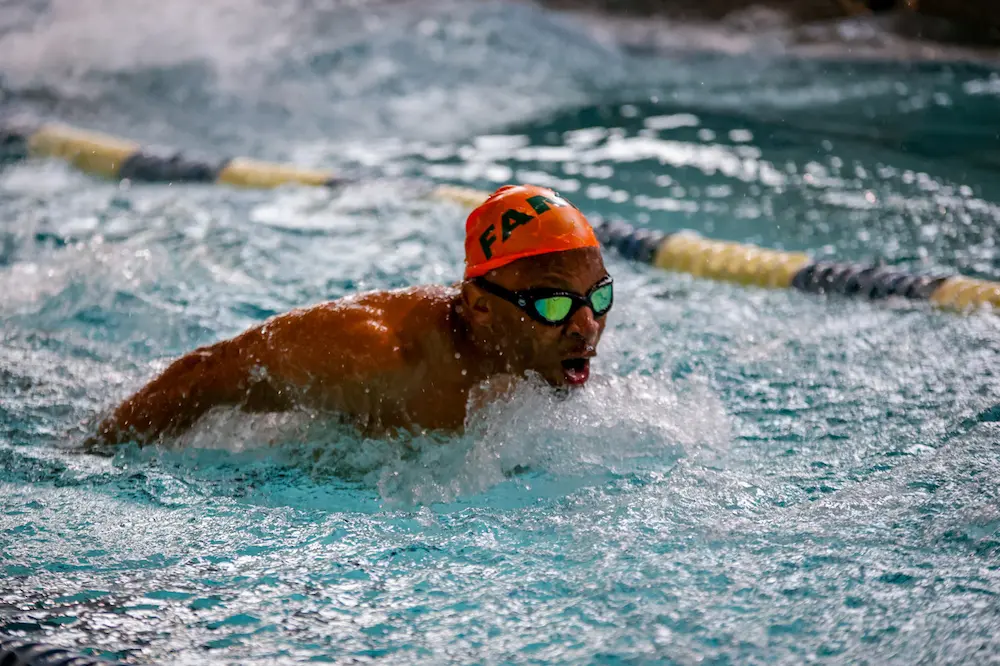
Engaging in an aquatics program can be a rewarding experience, whether you're looking to build confidence in the water, improve fitness, or even train for competition. Selecting the right program depends on your individual needs, goals, and preferences. This guide will help you navigate the various options available, evaluate program quality, and ensure that your choice aligns with your lifestyle.
Aquatics programs vary widely, catering to different skill levels, interests, and objectives. Below are some of the most common types:
Understanding these options will help you determine which program best fits your needs and interests.
Before selecting a program, it’s important to clarify what you hope to achieve. Consider the following factors:
Identifying your primary objectives will help you choose a program that aligns with your interests and long-term aspirations.
Not all aquatics programs are created equal. To ensure a positive experience, consider the following aspects when evaluating a program:
Taking these factors into account will help you choose a high-quality program that meets your needs.
To make the most of your aquatics program, it should fit well within your lifestyle. Consider these practical aspects:
By considering these factors, you can select a program that seamlessly integrates into your routine.
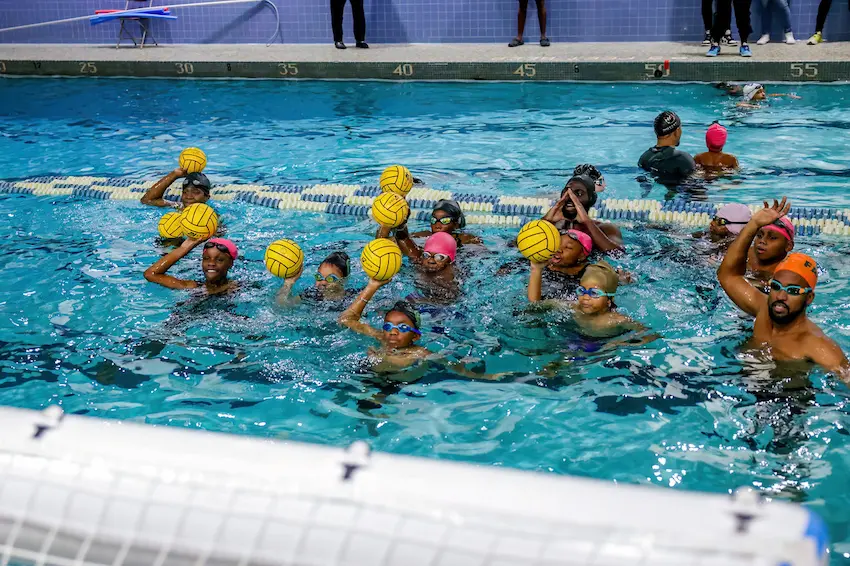
Water safety is more than swimming lessons—it's a public health imperative. Communities across the country face disparities in access to aquatic safety education and resources, contributing to disproportionately high drowning rates, particularly in marginalized populations. Legislative advocacy provides a powerful avenue to address these disparities, ensuring equitable, community-wide access to safe aquatic environments.
This guide walks you through the steps of advocating for water safety legislation—from understanding how laws are made to mobilizing community action and engaging lawmakers effectively.
Before initiating any advocacy efforts, it's crucial to understand how legislation works at the local and state levels. Typically, a bill begins as a proposal from a legislator or advocacy group. It is then introduced to a legislative body, where it is assigned to a committee for study. If the committee approves it, the bill moves forward to debates, amendments, and votes.
Water safety legislation often focuses on requirements for swim education in schools, lifeguard certification standards, public pool safety protocols, or funding for community water safety programs. Advocates must understand who the decision-makers are—local city council members, state legislators, or regulatory agencies—and what stages their proposals must pass through.
Engaging early, providing testimony during hearings, and remaining involved during implementation are all crucial. By understanding the legislative path, advocates can strategically insert themselves into the process to push for change at the right moments.
Grassroots movements gain strength through collective action. Building a coalition involves bringing together like-minded individuals and organizations that support water safety reform. This includes schools, swim clubs, public health departments, first responders, and nonprofit organizations.
Start by identifying allies already active in water safety education or community wellness. Reach out to parent groups, school boards, and community health advocates. Host introductory meetings to align on goals and roles, and assign responsibilities for outreach, media relations, and direct lobbying.
A united front presents a stronger, more credible voice to lawmakers. It also allows you to pool resources, diversify your message, and build momentum faster. Most importantly, coalitions help reflect the needs and voices of the broader community—especially those who have historically lacked access to safe aquatic environments.
Lawmakers respond to clear, passionate, and data-driven messages. When approaching legislators, personalize your outreach: highlight how water safety—or its absence—impacts their constituents.
Schedule meetings with your representatives and come prepared with:
Keep your message concise and actionable. Avoid technical jargon and focus on the tangible benefits of the proposed legislation—lives saved, improved health outcomes, and reduced emergency response costs. Offer to be a resource throughout the legislative process and follow up regularly to maintain momentum.
Remember, advocacy is a marathon. Building trust and rapport with legislators ensures sustained support for both the current initiative and future reforms.
For legislation to succeed, it must be backed by an informed and engaged public. Raising awareness creates pressure for change and strengthens your position when meeting with lawmakers.
Use a multi-channel approach:
Educational efforts should emphasize that drowning is preventable and that equitable access to water safety resources is a matter of social justice. Empower the community with knowledge, and equip them to join your advocacy efforts.
In 2022, the city of Riverbend faced a crisis: three child drownings in a single summer. A group of concerned parents, educators, and public health advocates launched the Water Works Campaign, aimed at making swim education mandatory in local schools and funding lifeguard training.
The coalition quickly mobilized community members and gathered over 3,000 petition signatures. They engaged the media, shared stories from affected families, and used local drowning statistics to illustrate the urgency. Their message resonated with city council members, who introduced a water safety bill within months.
Despite initial pushback over funding, the coalition worked with budget officials to reallocate existing public health grants. The legislation passed in early 2023, mandating swim education for all third graders and establishing new lifeguard programs at public pools.
Within one year, Riverbend saw a 40% increase in swim proficiency and zero youth drownings. The Water Works Campaign became a model for community-led legislative advocacy.
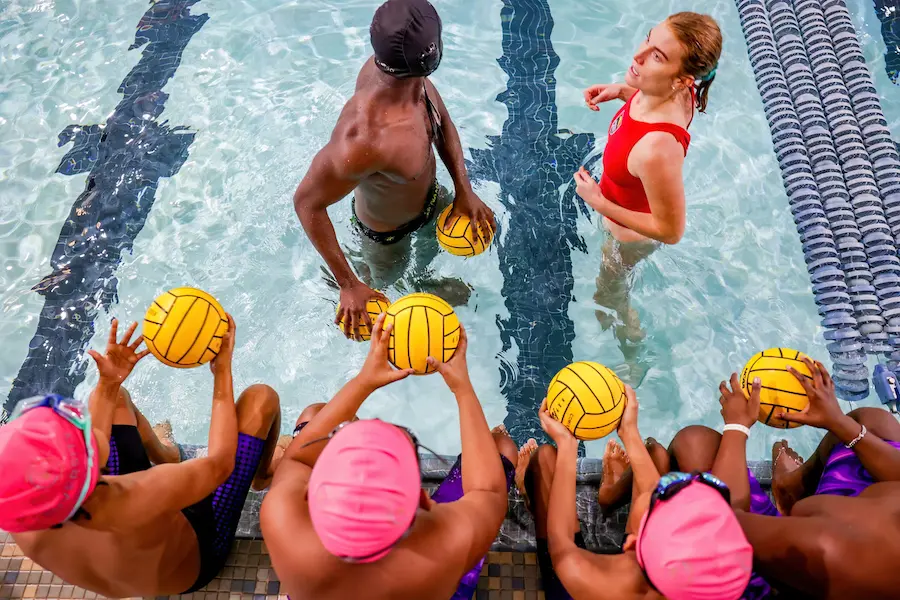
Inclusive aquatics communities are essential in the effort to prevent drowning and promote well-being. They reflect a commitment to making water activities accessible to all individuals, regardless of background, ability, or socioeconomic status.
Historically, access to aquatics and water safety programs has been uneven due to political, cultural, and resource-driven barriers. This article outlines these disparities and presents practical, inclusive strategies for aquatic sports directors, education policy advisors, and parents to help shape more equitable aquatics environments.
Together, we can redefine swimming as a sport—and life skill—for everyone, promoting health, safety, and social inclusion.
Inclusivity in aquatics ensures that people of all ages, identities, and abilities can enjoy the benefits of swimming. More than just recreation, swimming promotes cardiovascular health, mental resilience, and essential safety.
Creating inclusive environments means addressing and removing physical, economic, and cultural barriers. By doing so, we enhance community connection, foster belonging, and enable diverse participation that enriches the aquatic experience for all.
Access to aquatics has historically been limited for many due to segregation, discriminatory practices, and long-standing inequities. Recognizing this context is essential.
Programs that reflect local cultures and experiences help foster trust and participation. Inclusive aquatics begins by honoring diverse histories and building bridges through awareness, education, and culturally responsive programming.
Policy and funding decisions often shape who gets access to swimming facilities. Budget cuts, location disparities, and lack of political will can disproportionately affect marginalized communities.
To counter this, leaders must advocate for inclusive policies and targeted investments. Public-private partnerships, equity-focused funding models, and grassroots advocacy are essential tools in expanding access and building inclusive aquatics communities.
Swimming is a powerful tool for improving public health. It boosts physical fitness, supports mental well-being, and builds lifelong habits of physical activity.
Community pools also serve as vital social spaces. When swimming is accessible, it enhances cohesion, promotes safety, and contributes to overall community resilience. Prioritizing swimming access in public health planning ensures broader, lasting impact.
Inclusive aquatics must provide for individuals with disabilities through adaptive programs that offer tailored instruction and support.
From sensory-friendly sessions to one-on-one swim coaching, these activities ensure equitable access and a richer, more inclusive aquatic culture. Adaptive aquatics embodies the belief that everyone deserves the chance to enjoy and benefit from water-based activities.
Aquatic sports directors play a key role in shaping welcoming programs. Inclusive programming means offering a range of swim classes—group, individual, adaptive, cultural—and adjusting teaching methods for diverse learning styles.
Staff should receive ongoing training in cultural humility, disability inclusion, and trauma-informed practices. Programs should reflect community diversity and be co-created with local input.
Local partnerships with schools, nonprofits, and disability organizations can extend reach and relevance, while multi-language materials and diverse instructors help reflect the community’s identity.
Infrastructure is foundational to inclusivity. Physical spaces must be accessible to participants with mobility, sensory, or cognitive differences.
Key features include:
Web accessibility also matters: facility websites should follow WCAG standards, ensuring that people with visual or auditory impairments can find and access program information online.
Effective community engagement builds trust and increases participation. Outreach should go beyond marketing—create two-way conversations.
Strategies include:
Engaged communities are more likely to support, participate in, and sustain inclusive aquatic programs.
Ongoing education is vital for sustaining inclusive aquatic communities. This includes:
Educational efforts should also emphasize allyship, listening, and humility—core values in building inclusive spaces.
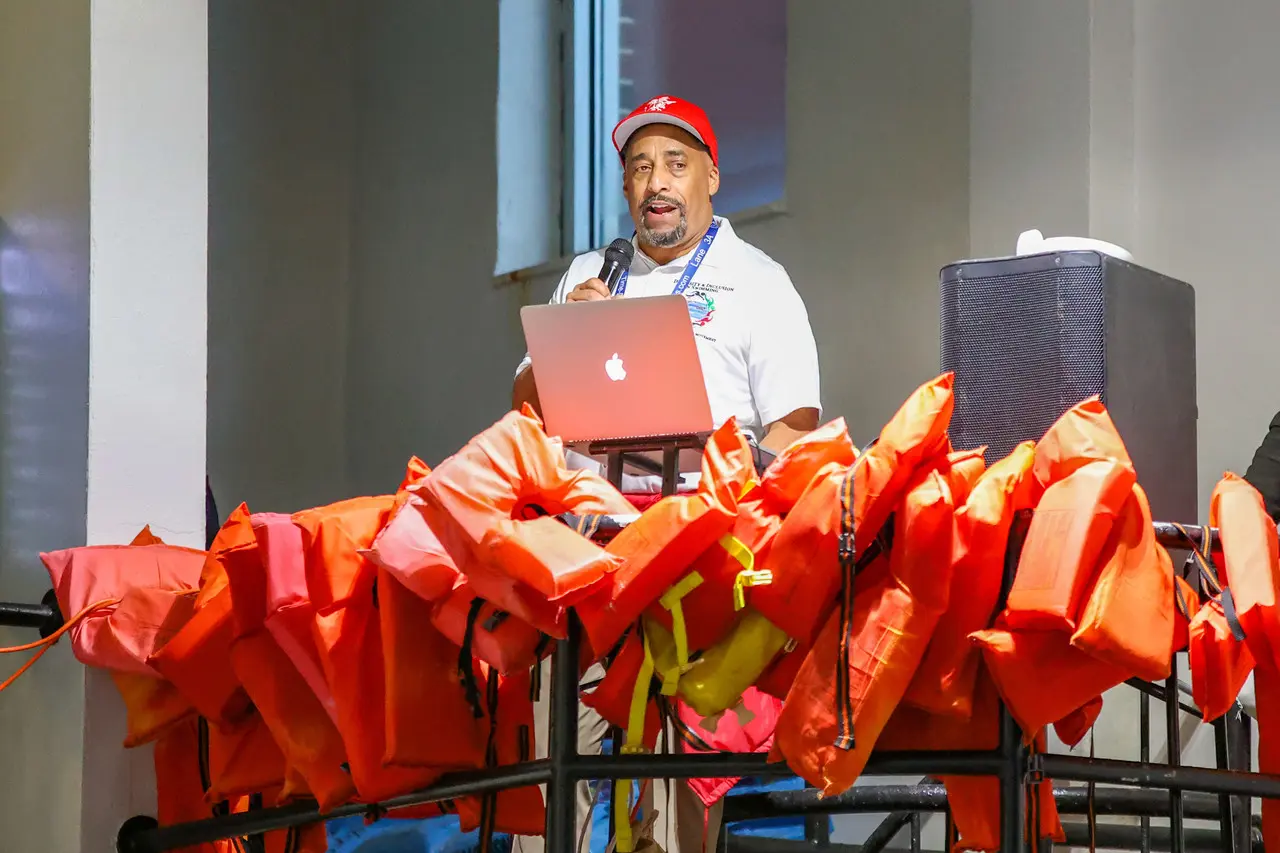
Aquatics offers a wide range of fulfilling career opportunities that go beyond recreation—they play a critical role in advancing public safety, community health, and social equity. From lifeguarding and swim instruction to aquatic research and medical care, careers in aquatics have the power to transform lives and communities.
However, to fully unlock the potential of aquatic careers, we must adopt a comprehensive approach—one that recognizes the sociopolitical challenges, builds inclusive pathways, and fosters leadership from underrepresented groups.
Access to swimming and aquatic sports has long been shaped by systemic inequities. Public policies, segregation, and economic disparities have historically limited access to pools, lessons, and aquatic programs—especially for communities of color and low-income families.
This history contributes to current underrepresentation in aquatic professions. A lack of access means fewer role models, fewer certifications, and fewer opportunities to envision aquatic work as a viable career. Supporting aquatic careers, therefore, begins with understanding and addressing these deeper structural and cultural challenges.
One of the most common entry points into the aquatic workforce is becoming a lifeguard. Lifeguarding fosters critical skills in leadership, responsibility, and emergency response—making it a launchpad to multiple professions.
After gaining experience, lifeguards can become certified instructors, training others and taking on leadership roles within aquatic organizations.
LGITs certify new instructors and play a key role in shaping safety standards regionally.
This leadership pipeline ensures career advancement while also improving safety and training standards across communities.
Aquatic experience—especially lifeguarding, instruction, or coaching—can be a stepping stone to several exciting and impactful careers.
Roles include:
These professionals not only teach swimming but also empower individuals with life-saving skills.
Lifeguards often transition into:
These professionals can specialize in aquatic therapy, pediatric care, or drowning prevention.
Aquatic workers can pursue:
Aquatic professionals with leadership potential can grow into:
Equitable access to education and certifications is foundational. Unfortunately, the cost of lifeguard training or lack of nearby facilities often excludes those most in need of opportunity.
Non-profits are uniquely positioned to bring aquatic opportunities to communities that are often left out of traditional programming. These organizations can provide local, culturally relevant swim and dive programs, mentorship, and scholarship support.
Leadership diversity is critical to creating a truly inclusive aquatic workforce. When youth see leaders who share their background or experiences, they’re more likely to view those roles as attainable.
Supporting aquatic careers is about more than job creation—it’s about building pathways to empowerment, bridging racial and economic gaps, and ensuring water safety for all.
To succeed, we must:
By nurturing these pathways, we create a future where aquatic professions reflect the rich diversity of the communities they serve—fostering safety, health, and opportunity in and out of the water.
Water Safety: Stay Safe in and Around Water

Water safety is a matter of life and death—and often overlooked. Equitable access to water safety resources saves lives, prevents accidents, and opens doors to the joy of aquatic experiences. Yet, systemic disparities and social barriers often leave many communities without the tools they need.
This page serves as your guide to discovering, using, and sharing key water safety resources, with materials contributed by trusted organizations such as the American Red Cross, Safe Kids Worldwide, the National Water Safety Action Plan, the ZAC Foundation, Broward County Water Safety, California Water Safety, and New Jersey Water Safety. Whether you're a parent, educator, aquatic director, or community leader, this page equips you to be a water safety advocate.
A wide range of water safety resources exists to support individuals, families, and communities. These resources are designed for easy understanding and practical use:
These resources empower educators and advocates to integrate safety into lessons, events, and daily life.
Accessing these valuable materials is easier than ever. Here are direct sources to get started:
Visit our Diversity in Aquatics Resource Page to download curated materials or request printed kits for your organization.
Water safety education should meet people where they are. Here’s how to apply these tools in various environments:
Tailoring content by setting ensures effective communication and maximum impact.
Educating one person can ripple out to an entire community. Here’s how to amplify water safety awareness:
Your outreach can close the gap between access and action.
By accessing and sharing water safety resources, you become part of a broader movement—one that saves lives and promotes joy through safe aquatic experiences. Together, with strong partners and an informed community, we can reduce drowning risks and open the waters to everyone.
Ready to make a splash in safety? Visit our Resource Page now to download tools, get involved, and share with your community.
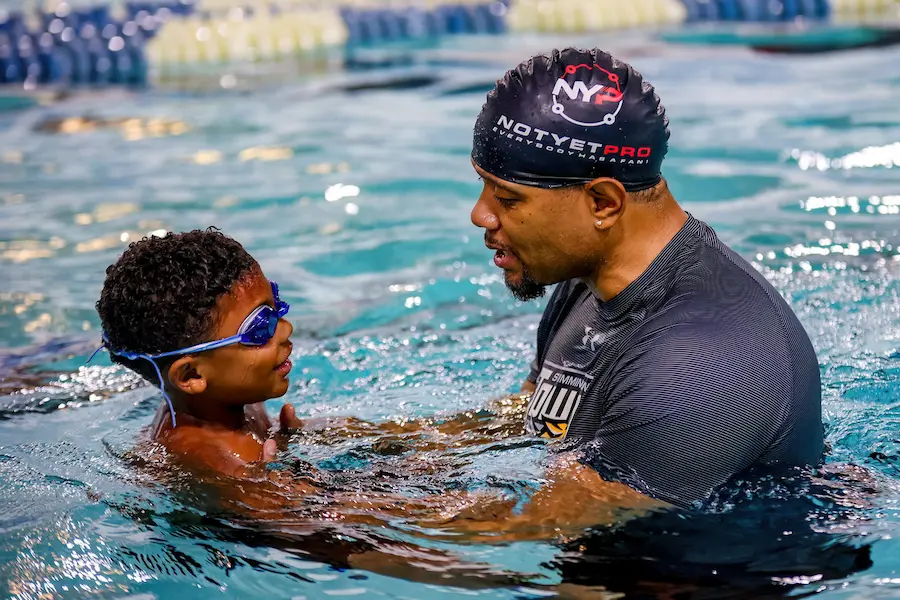
Water safety is a critical issue that affects everyone, but it is often overlooked in community education efforts. Understanding the importance of water safety and drowning prevention can make a significant difference in saving lives and ensuring that everyone can enjoy aquatic activities safely.
This guide provides you with practical steps to educate your community about water safety—now enhanced with digital best practices from our web development team—to ensure inclusivity, accessibility, and scalability.
Water safety education is not just about learning to swim. It's about creating a culture of awareness and preparedness that helps prevent drowning and promotes safe practices around water. Drowning is a leading cause of injury-related death among children, and many of these tragedies are preventable with the right education and resources.
Before diving into strategies, it's crucial to recognize the historical and cultural factors that contribute to disparities in access to aquatic education. Marginalized communities have often faced barriers to swimming facilities and instruction. Addressing these barriers with sensitivity and awareness is essential for effective and equitable education.
Raise awareness through both traditional outreach (flyers, community events) and digital platforms. Web developer tips:
Build partnerships with schools, recreation centers, and non-profits to amplify your message.
Web developer tips:
Ensure swimming lessons are physically and financially accessible.
Web developer tips:
Offer workshops on key skills like CPR and recognizing drowning signs.
Web developer tips:
Tailor educational content using culturally sensitive messaging and visuals.
Web developer tips:
Include open water safety in your messaging.
Web developer tips:
Help ensure that pools follow best safety protocols.
Web developer tips:
Reinforce the importance of swimming with others.
Web developer tips:
Get buy-in from local leaders and influencers.
Web developer tips:
Recognize and reward community involvement.
Web developer tips:
Solicit feedback and adapt.
Web developer tips:
Plan local events such as swim clinics and CPR demos.
Create a network of support.
Spread awareness through digital outreach.
Ensure resources are inclusive and easy to access.
Enable assistive technology features (alt text, captions, screen reader compatibility).
Water safety education is a vital component of community well-being. By incorporating historical awareness, inclusive programming, and digital strategies, we can empower all communities to stay safe around water.
Let’s work together—with the support of technology and community—to make water safety education accessible, engaging, and impactful for all.
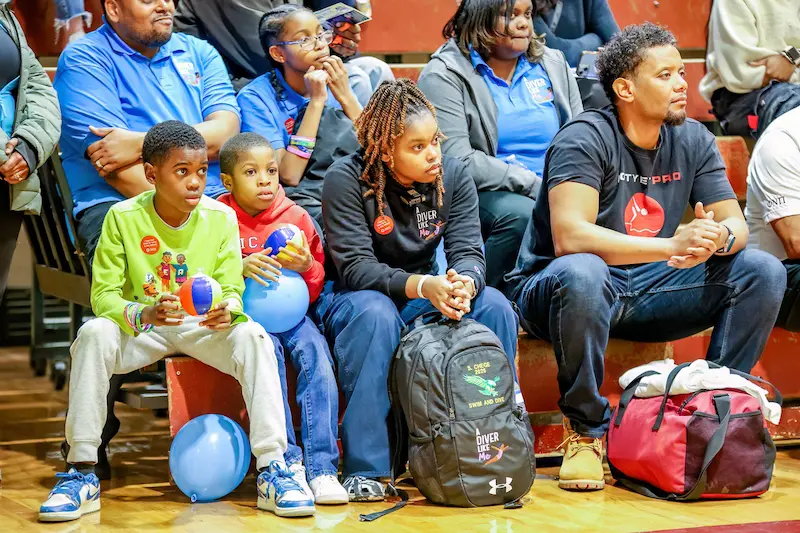
Water safety is a critical concern for all parents, guardians, and caregivers. For infants and toddlers, the risks are even greater—drowning is one of the leading causes of unintentional injury-related death in young children. This guide is designed to equip you with the knowledge, tools, and practical steps needed to safeguard your child in and around water.
Whether you're preparing your home, exploring aquatic activities, or educating others, your vigilance can make all the difference. Let’s work together to build a culture of safety from the very beginning.
Protecting Infants and Young Children from Drowning Risks
**Never leave young children unattended near water—**not for a second. Drowning can happen quickly and silently, often in less than two inches of water.
High-risk areas include:
Key safety practices:
This non-negotiable practice is the most effective way to prevent tragedy. Constant, active supervision saves lives.
A water-safe home begins with childproofing measures that eliminate hidden dangers. Infants are naturally curious and quick-moving—every precaution matters.
Safety steps for your home:
These proactive steps significantly reduce the risk of accidents and create a safer everyday environment for your little one.
Helping infants and toddlers become familiar with water is a valuable part of their development—but it must be done safely.
Best practices for early water introduction:
Early exposure, combined with close supervision, fosters a healthy respect for water and prepares children for lifelong water safety.
Infants face different risks depending on the water setting. Recognizing these dangers allows caregivers to manage them effectively.
Common water environments and risks:
Mitigation strategies:
Being proactive in every water environment keeps infants safer across all situations.
Water safety starts at home—and it starts with you. Through constant supervision, safe practices, and early education, you can give your child the gift of safe water experiences.
By making water safety a daily priority and advocating for equitable swimming access in all communities, we can ensure every child has the tools they need to thrive in and around water. Together, let’s build a future where water safety is second nature.
Connect with Our Aquatic Councils
Aquatic Councils within Diversity in Aquatics serve as specialized communities designed to foster inclusion, safety, and excellence across various aquatic disciplines. These councils provide a platform for individuals passionate about swimming, diving, and other water-based activities to connect, share resources, and collaborate. Each council focuses on a specific discipline or interest area, creating an environment where members can exchange knowledge, learn from one another, and work together to promote diversity and inclusion.
Find an Aquatic Program Near You
How to Use the Swim Location Finder in 3 Easy Steps
1. Enter Your Location
Type in your zip code, city, or address, or let the tool access your current location to find swimming options near you.
2. Choose Your Preferences
Filter results by the type of facility, programs offered (like swim lessons or water aerobics), age group, or affordability to match your needs.
3. Explore and Connect
Browse a map or list of nearby swim spots, view details, get directions, and find contact info to register or learn more.
Our Aquatic Programs
Diversity in Aquatics offers a wide range of water-related programs designed for all ages and skill levels. From beginner swim lessons and specialized clinics to competitive swim meets and community events, our programs promote safety, inclusion, and excellence in aquatics. Explore our offerings to find the perfect fit for your journey in the water.
Our Services: Supporting Aquatic Communities
Diversity in Aquatics offers three core service areas designed to empower communities, enhance water safety, and promote inclusivity in aquatic spaces:
Training and Certifications
Lifeguard and water safety instruction delivered through national partnerships, including the American Red Cross.
Research
Data-driven studies and publications that advance understanding of diversity, equity, and inclusion in aquatics.
Curriculum Development & Consultations
Customized educational materials and strategic guidance for schools, community organizations, and aquatic programs.
Each service supports our mission to eliminate barriers and create safer, more inclusive aquatic environments for all.
Watch & Learn: Dive Into Our Video Library
Explore our diverse videos designed to educate, inspire, and empower. From water safety tips and swim techniques to powerful stories of aquatic champions, our video library has something for everyone. Watch, learn, and be inspired by heading to our YouTube channel to subscribe and stay connected with the latest content!
Aquatic Terms: A Glossary of Key Concepts
Whether you're new to aquatics or looking to deepen your knowledge, our glossary offers clear definitions of essential water-related terms. This valuable resource helps you better understand key concepts in swimming, water safety, and aquatic programs—making it easier to stay informed, confident, and safe in and around the water.